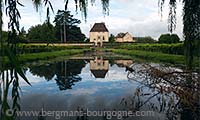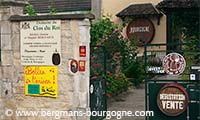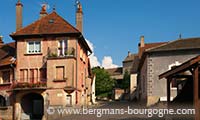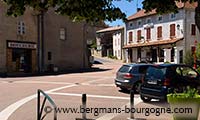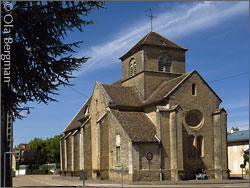
remaeux-Prissey and the following two villages – Comblanchien and Corgoloin – all find themselves in the shadow of their neighbours.
None of them is entitled to an appellation of its own. Corgoloin and Comblanchien are lumped together with Fixin and Brochon at the top of the Côtes de Nuits under the
Côtes de Nuits-Villages appellation, while Premeaux-Prissey has both Côtes de Nuits-Villages and Nuits-Saint-Georges (depending on the vineyard). The Nuits-Saint-Georges premier crus continue all through the village, along the steep west side of the RN74. There are a few plots of Nuits-Saint-Georges village on both sides of the road. The rest is Côte de Nuits-Villages.
Premeaux became Premeaux-Prissey in 1972 after a fusion with Prissey on the other side of the Paris-Lyon railroad. The village dates back to 1160, its name deriving from "premières eaux", and is a charming place. Further down towards the motorway is a camping ground. But the bath signposted out by the RN74 is closed.
In Comblanchien the Côte d'Or is interrupted by four quarries. This village is one of the few that is more known for something not related to wine. The stone produced here is widely used in France, both for the Paris Opera and the Orly airport for instance.
During World War II Comblanchien was severely hit by the Germans. The resistance was strong here, which led the Germans to retaliate. On August 21, 1944, much of the village was destroyed and eight people killed. You can read more about this and Comblanchien in general on Jacky Cortot's excellent web site dedicated to the village.
Corgoloin marks the southern end of the Côte de Nuits. With its 900 inhabitants it is the last stop before the Côte de Beaune. Only Domaine d'Ardhuy is closer to the Ladoix-Serrigny border.
© 2013 Ola Bergman










